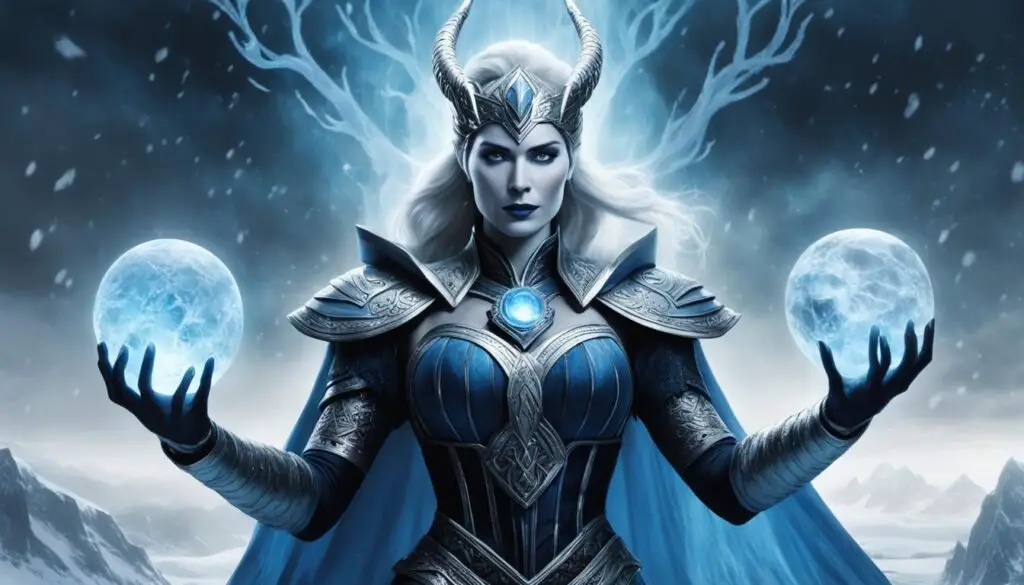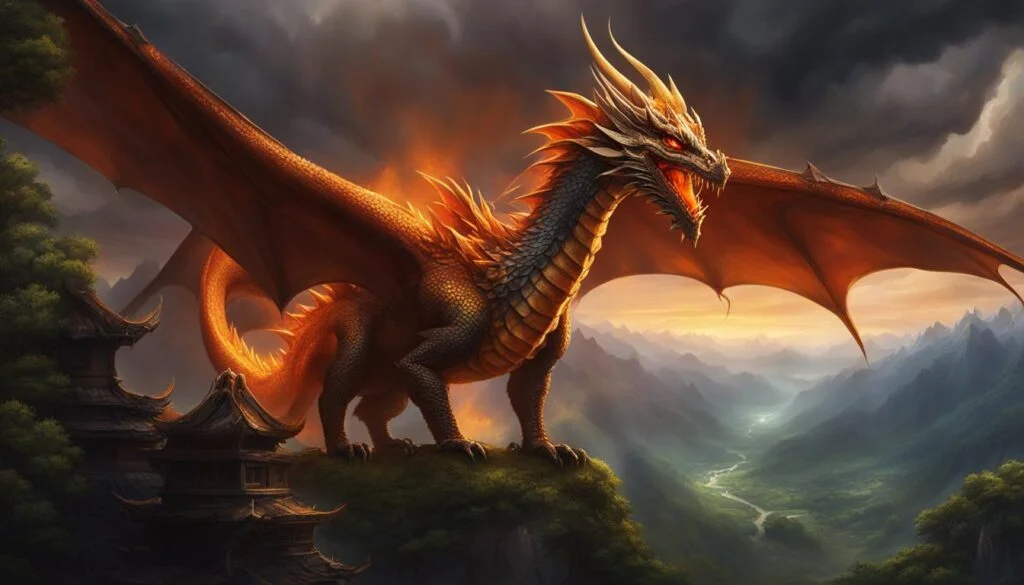Welcome to our exploration of Laufey, a captivating figure in Norse mythology. Known as the mother of Loki, her enigmatic presence adds depth and complexity to the ancient tales of the Norse gods.
Laufey, whose name means “leafy,” is often associated with nature and fertility. While her exact status and relationships within the Norse pantheon are debated among scholars, her role as Loki’s mother holds significant importance.
Join us as we delve into the origins of Laufey, her symbolism and significance, and her influence on the Norse pantheon. We’ll also explore her portrayal in modern adaptations and the mysteries that continue to surround this intriguing titaness.
Key Takeaways:
- Laufey is a figure in Norse mythology and the mother of Loki.
- Her name, meaning “leafy,” suggests a connection to nature and fertility.
- Laufey’s role in the Norse pantheon and her exact status are subjects of debate among scholars.
- She is associated with symbolism related to nature, fertility, and chaos.
- Laufey’s portrayal in modern adaptations, like the Marvel universe, differs from the original Norse mythology.
The Norse Pantheon and Laufey’s Role
In Norse mythology, the pantheon consists of twelve main gods, including prominent figures like Odin, Thor, and Freya. Within this rich tapestry of deities and legends, Laufey’s role as the mother of Loki holds a unique significance.
While the exact details of Laufey’s status and relationships within the Aesir or jötun tribes remain a subject of debate among scholars, her connection to Loki links her to the larger pantheon. As Loki’s mother, Laufey brings complexity and intrigue to the stories and legends of Norse mythology.
Laufey’s presence adds depth to the narrative, weaving together the intricate dynamics of the gods and giants. Her role as a maternal figure shapes the destinies of the gods as they grapple with the consequences of her son’s actions.
In the tales of Norse mythology, Laufey’s influence reaches far beyond her status as a mother. Through her connections and associations, she becomes entwined with the larger tapestry of divine beings, contributing to the ongoing drama and challenges faced by the gods.
As we delve deeper into the realms of Norse mythology, Laufey’s presence offers a window into a world of divine intrigue, contrasting loyalties, and captivating storytelling.
Laufey’s Origins and Etymology
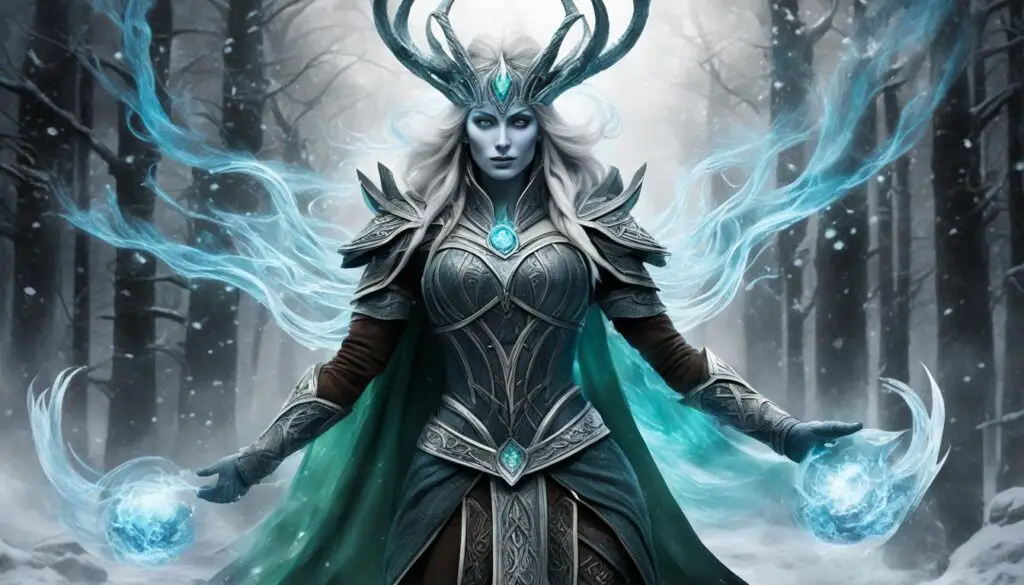
Laufey, a figure in Norse mythology and the mother of Loki, derives her name from the Old Norse word “lauf,” which translates to “leaves” or “foliage.” This etymology suggests a strong connection to nature and the natural world. Additionally, the suffix “-ey” commonly found in female names indicates an island or islands.
Combining “lauf” and “-ey,” Laufey’s name takes on the interpretation of “leafy island” or “island of foliage.” This association aligns with the potential role of Laufey as a goddess of nature and fertility, embodying the lushness and vitality of the plant kingdom.
While her exact status within the Norse pantheon remains debated among scholars, the origins and etymology of Laufey’s name provide valuable insights into her symbolic connection to nature and hint at her potential as a powerful Norse deity.
Laufey: Mother of Loki
In Norse mythology, Laufey is best known for her role as the mother of Loki, the mischievous trickster god. She is married to Fárbauti, a jötun, and together they have three children: Loki, Helblindi, and Býleistr. In the mythology, Laufey’s maternal lineage is emphasized, often referring to Loki as “Loki Laufeyjarson” or “Loki, son of Laufey” rather than using his father’s name.
Laufey’s significance as Loki’s mother provides insight into their familial connection and the influence she had on Loki’s character and actions. It is through her line that Loki inherits his cunning and unpredictable nature.
Laufey’s Power and Influence

While the ancient texts do not explicitly describe Laufey’s powers and abilities, her connection to nature and fertility suggests that she may have possessed extraordinary abilities related to these domains. As a strong and wise figure, Laufey challenged the authority of the gods and often created obstacles for them to overcome.
Her association with nature implies a deep understanding and control over the forces of the natural world. It is possible that Laufey could manipulate plants, animals, and the elements to her advantage, using her powers to shape the environment around her.
Furthermore, Laufey’s role as Loki’s mother speaks to her immense influence and impact within Norse mythology. As the mother of one of the most cunning and mischievous gods, Laufey’s power and cunning may have shaped Loki’s own abilities. It is through her lineage that Loki inherits his intellect, trickery, and shape-shifting capabilities.
Unfortunately, the precise details of Laufey’s powers and influence remain shrouded in mystery. However, her presence in Norse mythology as a formidable force continues to captivate scholars and enthusiasts alike.
Laufey’s enigmatic character, combined with her connection to nature and her portrayal as a strong and wise figure, adds depth and intrigue to the stories of the Norse gods. Her significance in the mythology cannot be overlooked, and her powers, though not explicitly described, are undoubtedly formidable.
As we delve further into the mysteries of Norse mythology, the elusive nature of Laufey’s abilities serves as a reminder of the vastness and complexity of the ancient Norse pantheon.
Depictions of Laufey in Norse Mythology
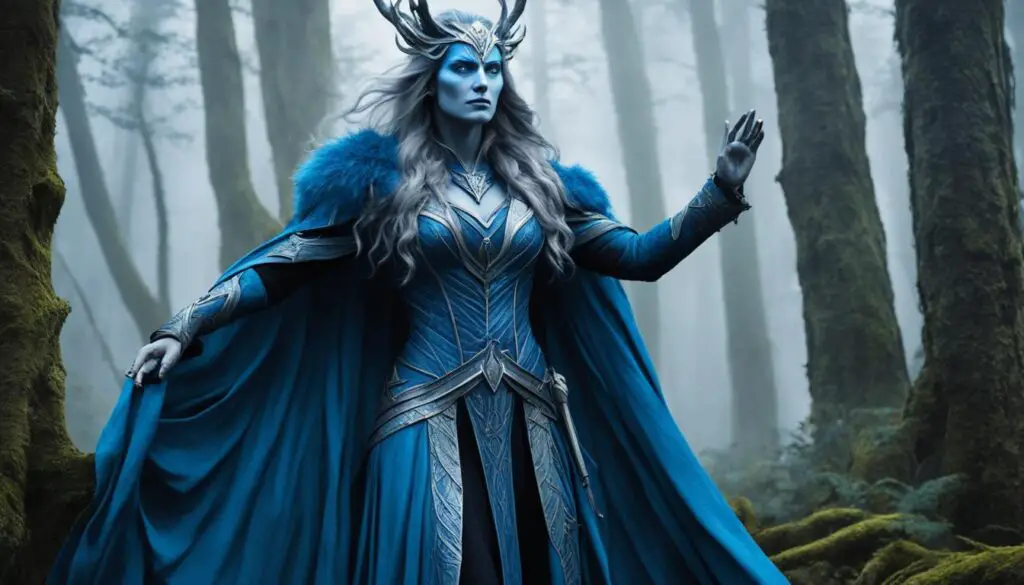
The ancient texts offer limited descriptions of Laufey’s physical appearance. However, artists have depicted her as a slender and beautiful figure with long, flowing hair. In these portrayals, she is often associated with nature and fertility, symbolizing her significance in Norse mythology.
Laufey is commonly represented with a pale complexion, emphasizing her affiliation with the natural world. Her silver hair further exemplifies her connection to the elements of the earth and her role as a goddess. These visual interpretations enhance the imagination and understanding of Laufey’s character within the context of Norse mythology.
Laufey in Modern Adaptations

In modern adaptations, such as Marvel comics and movies, the portrayal of Laufey takes a different direction from the original Norse mythology. While Laufey is traditionally depicted as a female giantess in the ancient tales, Marvel’s interpretation introduces a significant gender change.
In the Marvel Cinematic Universe (MCU), Laufey is portrayed as a male figure, causing some confusion among fans regarding the character’s true identity. This deviation from the original mythology has sparked discussions and debates among enthusiasts.
Marvel’s portrayal of Laufey as a male character adds a unique twist, altering the perception of this intriguing figure. The gender change brings new dynamics and a fresh perspective to the character’s interactions within the Marvel universe.
Laufey’s Symbolism and Significance
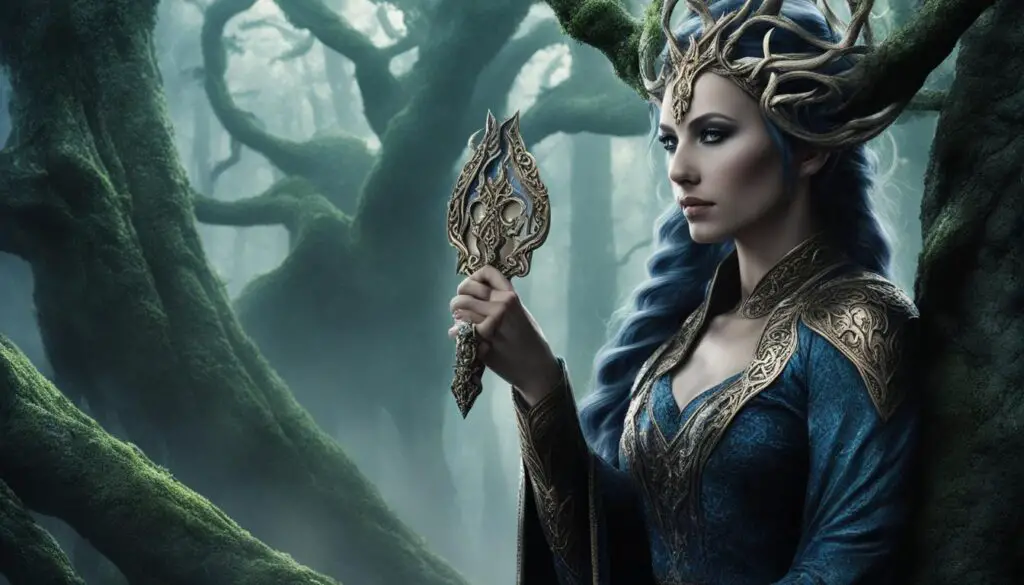
Laufey, the mysterious figure of Norse mythology, holds profound symbolism and significance within the ancient tales. Her name, derived from the Old Norse word “lauf” meaning “leaves” or “foliage,” reflects a connection to the natural world. As the mother of Loki, she embodies the essence of nature, fertility, and chaos.
In Norse mythology, Laufey epitomizes the leafy island, a symbol of the abundant and vibrant forces of nature. Her association with fertility suggests an inherent power to nurture and bring forth new life. Through her maternal lineage, Laufey champions the cycles of creation and growth, aligning her with the natural order of the cosmos.
However, Laufey’s significance extends beyond her role as a mother and nurturer. She is also linked to humor and mischief, characteristics inherited by Loki, the god of mischief. This association with chaos and unpredictability adds depth and complexity to her symbolism.
As depicted in ancient Norse texts, Laufey embodies a free spirit that challenges the authority of the gods and introduces obstacles for them to overcome. Her mischievous nature brings an element of suspense and surprise to the stories, highlighting the delicate balance between order and chaos in the realms of gods and mortals.
Conclusion
The enigmatic figure of Laufey in Norse mythology remains a captivating and mysterious character. Her role as Loki’s mother adds depth and complexity to the overall mythology. While there are varying interpretations and debates about her status and relationships within the Norse pantheon, her significance cannot be denied. Laufey’s association with nature, fertility, and chaos brings a unique perspective to the ancient stories of the Norse gods.
Throughout the ancient texts, Laufey’s name and attributes have been linked to nature and foliage, suggesting a connection to the natural world. This association aligns with her potential role as a goddess of nature and fertility. Her portrayal as a strong and wise figure challenges the authority of the gods, creating obstacles for them to overcome. The lack of explicit descriptions of her physical appearance in the ancient texts allows for artistic interpretations, often depicting her as a slender and beautiful figure with long hair.
In modern adaptations, such as Marvel comics and movies, Laufey is often portrayed as a male figure, deviating from the original Norse mythology where Laufey is seen as a female giantess. This change in gender has sparked confusion among fans about the character’s true identity. However, the symbolism and significance associated with Laufey remain consistent. Her enigmatic nature, coupled with her connection to chaos and humor, makes her an intriguing character in Norse mythology.
FAQ
Who is Laufey?
Laufey is a figure in Norse mythology and the mother of Loki. Her name, which means “leafy,” is often associated with nature and fertility.
What is Laufey’s role in Norse mythology?
Laufey’s role as Loki’s mother connects her to the larger Norse pantheon, although her exact status and relationships within the Aesir or jötun tribes are debated among scholars.
What does the name “Laufey” mean?
The name “Laufey” is derived from the Old Norse word “lauf,” meaning “leaves” or “foliage.” This suggests a connection to nature and possibly fertility.
Was Laufey a god or a giantess?
Laufey is not explicitly mentioned as an Aesir or jötun in Norse mythology, but she is often portrayed as a female giantess, married to the jötun Fárbauti.
What powers did Laufey have?
The ancient texts do not explicitly describe Laufey’s powers and abilities. However, her connection to nature and fertility suggests that she may have had powers related to these domains.
How is Laufey depicted in Norse mythology?
Laufey is often depicted as a slender and beautiful figure with long hair. Artists have portrayed her with a pale complexion and silver hair, reflecting her association with nature and fertility.
How is Laufey portrayed in modern adaptations?
In modern adaptations, such as Marvel comics and movies, Laufey is often portrayed as a male figure. This deviates from the original Norse mythology, where Laufey is seen as a female giantess.
What is the symbolic significance of Laufey?
Laufey is associated with symbolism related to nature, fertility, and chaos. Her name, meaning “leafy island,” suggests a connection to the natural world.
What is the significance of Laufey in Norse mythology?
Laufey’s presence in Norse mythology adds complexity and intrigue to the stories and legends. Her role as Loki’s mother brings a unique perspective to the ancient tales of the Norse gods.


